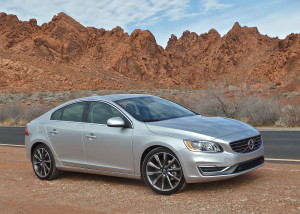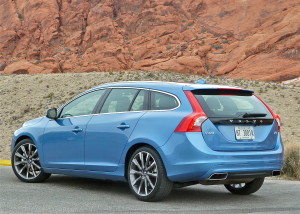New Engines Give Volvo More From Less
Filed under: Equinox, Autos
By John Gilbert
LAS VEGAS, NEV. — Volvo has always built solid and substantial vehicles, with equal parts inherent safety and the durability to last indefinitely. While mastering those impressive objectives, Volvo engineers also are programing their cars for the future, with a new family of 4-cylinder engines that can be tuned and tweaked to span all the demands of power and efficiency for the company’s latest sedans, wagons and SUVs.
Volvo’s recent models have used 4-cylinder, 5-cylinder, 6-cylinder and even V8 engines to handle the varying needs of different Volvo vehicles. While Volvo’s assorted engines have all won acclaim, the magic of computerized supercharging and turbocharging can push its new high-tech 4s to cover all horsepower and torque requirements.
The new modular Volvo-built 2.0-liter 4 is designed to be built alongside the current tried and true 2.5-liter 5-cylinder and the 6, engines that will be phased out as the new 4s are phased in. The existing 5-cylinder has 226 horsepower and 275 foot-pounds of torque; the existing 6 has 276 horsepower and 325 foot-pounds — good figures indeed.
However, the new “T5” is turbocharged, and the new “T6” is both supercharged for low-RPM duty and turbocharged for the high end. Using both techniques gives the new 4 stunning power — 302 horsepower and 295 foot-pounds of torque. For good measure, both new engines are rated at over 30 miles per gallon in highway driving, and have a combined city-highway estimate of either 28 or 29 mpg.
“We were very proud when our 6-cylinder turbo made the ‘Ward’s 10-Best Engines’ list, but our new 4-cylinders will outperform them and will crowd them out.” said Jan-Erik Larsson, Volvo’s chief powertrain engineer. ”We are develping other engines as well. In Europe, we have a turbo-diesel, and a plug-in hybrid. We have put a lot of resources into producing the attributes customers want.
“Nobody can predict what future cars will be using. Long-term, we think we’ll be using electric power, but as we get there, will we be using gasoline engines, diesels, hybrids, or pure electric power? No question, our industry is in a state of transition right now. Whatever we will be using by 2050, we know that internal combustion engines will still be in use in some form in the near future, say, 2020.”
As an automobile company always exuding stability, Volvo has spent a lot of its history in transition. In recent years, that transition has been toward high style, and Volvo could well place the new cars on a pedestal and promote their styling alone. Instead, it’s time for Volvo engineers to show off their newest engines, which were introduced to the media in the latest S60 sedan, V60 wagon, and XC-60 compact SUV through the countryside surrounding Las Vegas. It took most of us in the automotive media a while to figure out the new designations, because while they describe different engineering tricks on the same basic engine, they are, at best, confusing. Read more




 John Gilbert is a lifetime Minnesotan and career journalist, specializing in cars and sports during and since spending 30 years at the Minneapolis Tribune, now the Star Tribune. More recently, he has continued translating the high-tech world of autos and sharing his passionate insights as a freelance writer/photographer/broadcaster. A member of the prestigious North American Car and Truck of the Year jury since 1993. John can be heard Monday-Friday from 9-11am on 610 KDAL(www.kdal610.com) on the "John Gilbert Show," and writes a column in the Duluth Reader.
John Gilbert is a lifetime Minnesotan and career journalist, specializing in cars and sports during and since spending 30 years at the Minneapolis Tribune, now the Star Tribune. More recently, he has continued translating the high-tech world of autos and sharing his passionate insights as a freelance writer/photographer/broadcaster. A member of the prestigious North American Car and Truck of the Year jury since 1993. John can be heard Monday-Friday from 9-11am on 610 KDAL(www.kdal610.com) on the "John Gilbert Show," and writes a column in the Duluth Reader.